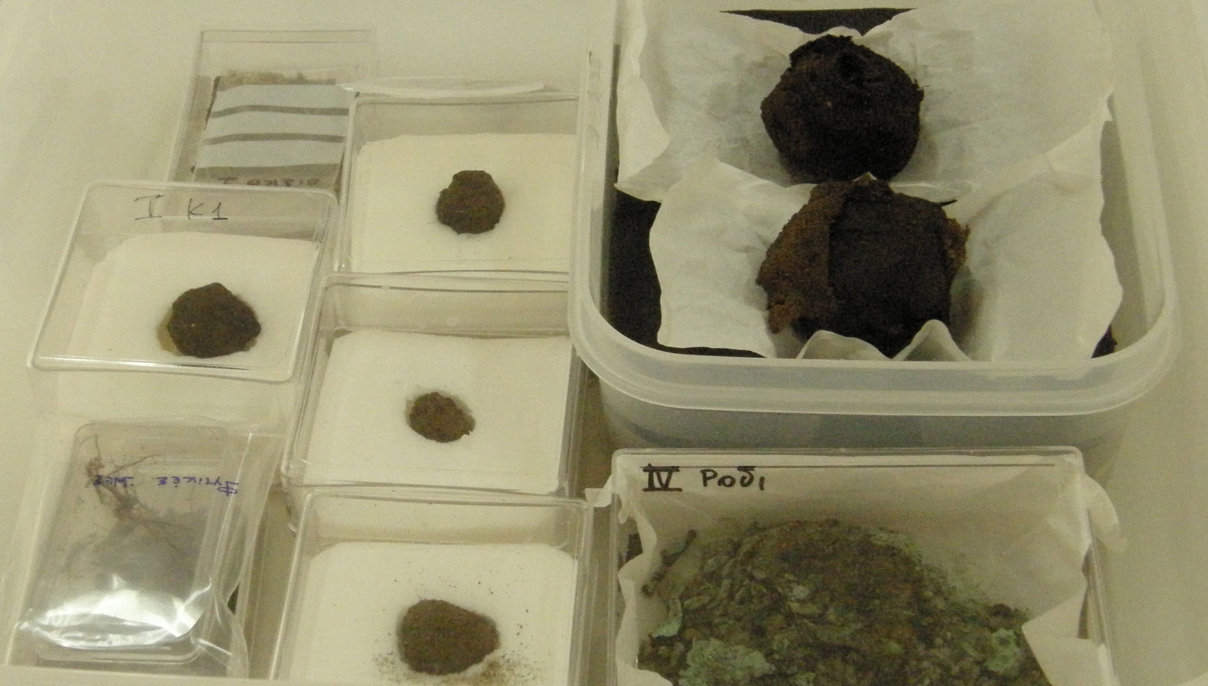Conditions of preservation
textiles in small boxes.jpg

Textiles in small boxes. Photo C. Margariti.
Until the beginning of the last decade and apart from the discoveries of some ancient textiles in the middle of the 20th century, such as the fabric from Eleusis, the prevailing view was that in Greece there are no discoveries of archaeological textiles due to the climate that is not favourable for their conservation. However, this picture has changed since more and more fabrics are being discovered, initially in excavations for the construction of the Athens Metro. Usually in very small fragments, Greek archaeological textiles are mostly preserved in a remineralised state due to their contact with metal objects. A method of scientific analysis combining the optical with the scanning electron microscope allows us today to study mineralised textiles and to identify their fibres. Nowadays, there is a corpus of over 100 fabrics from Greece dating from the Neolithic to the Byzantine era.
The archaeological textile remains in Greece derive almost exclusively from funerary contexts. This means that we focus on a very specific subgroup of what must have been the entire ancient Greek textile production. Most likely the survived fabrics represent a specific, funerary, type of textiles, suitable to be used to accompany the dead to the underworld. Their characteristics reveal the specifications of the burial cloths of their time, which were quite specific and in many periods defined by law. For this reason we observe great uniformity in the technical details, such as raw materials, spinning, weaving techniques etc.


